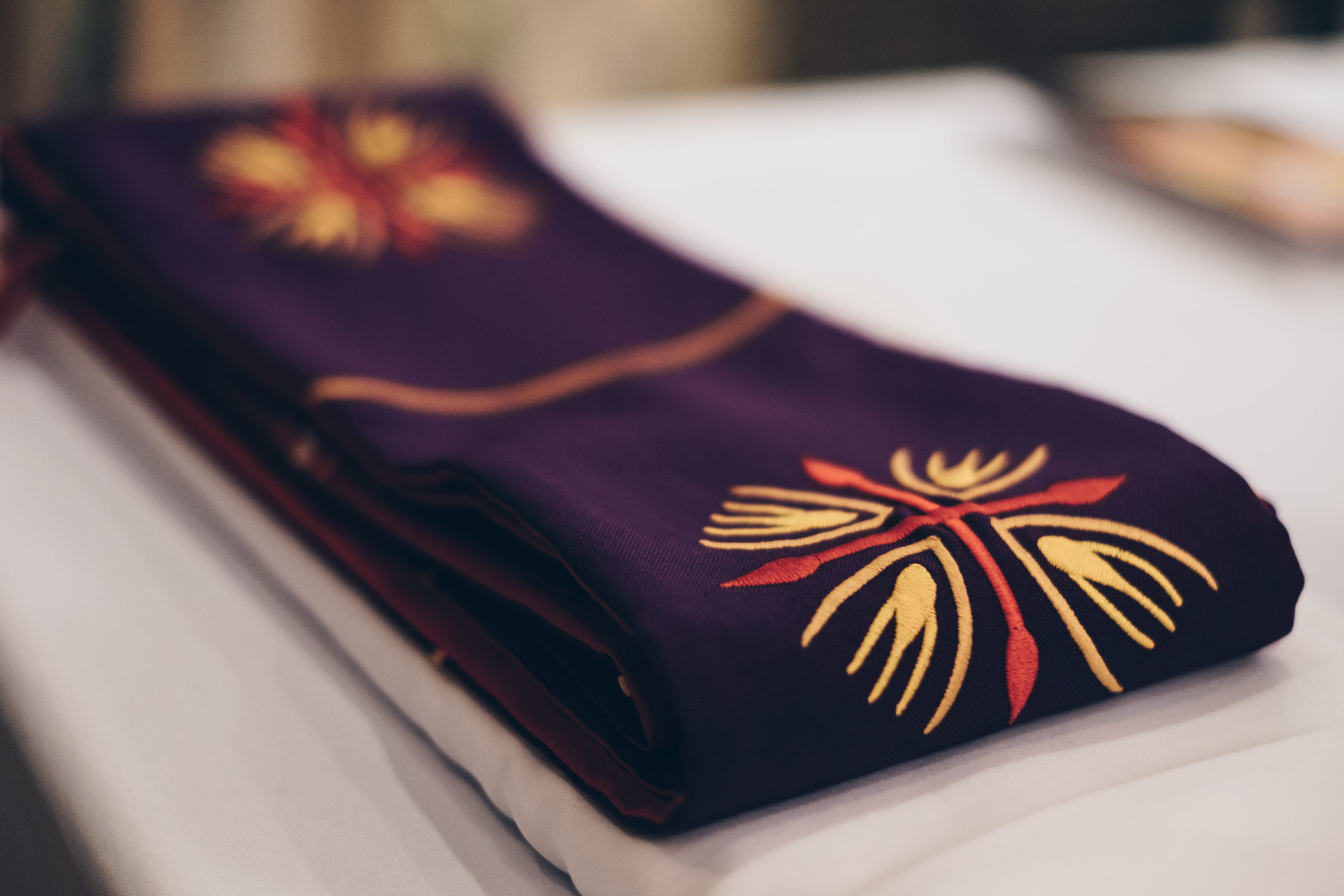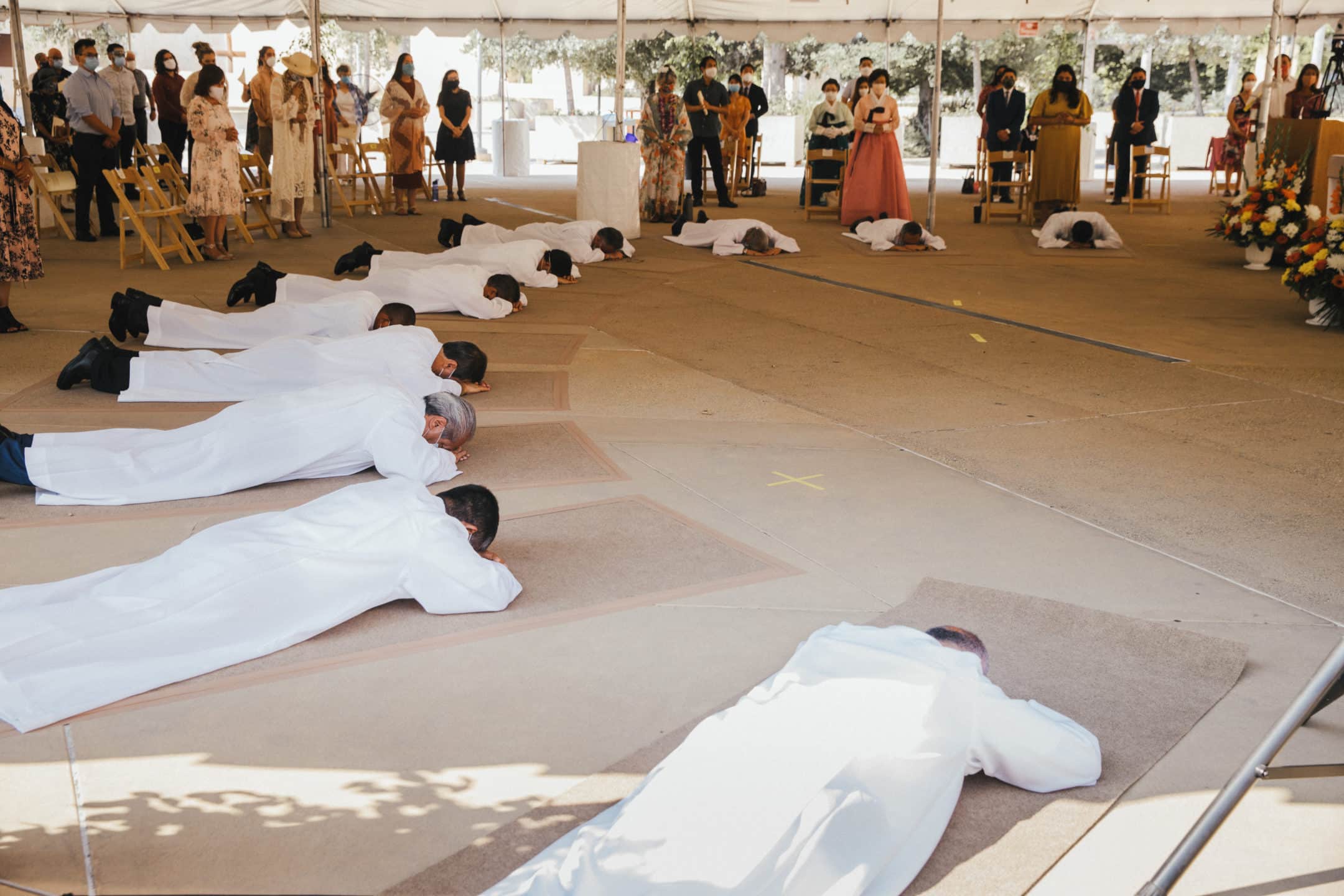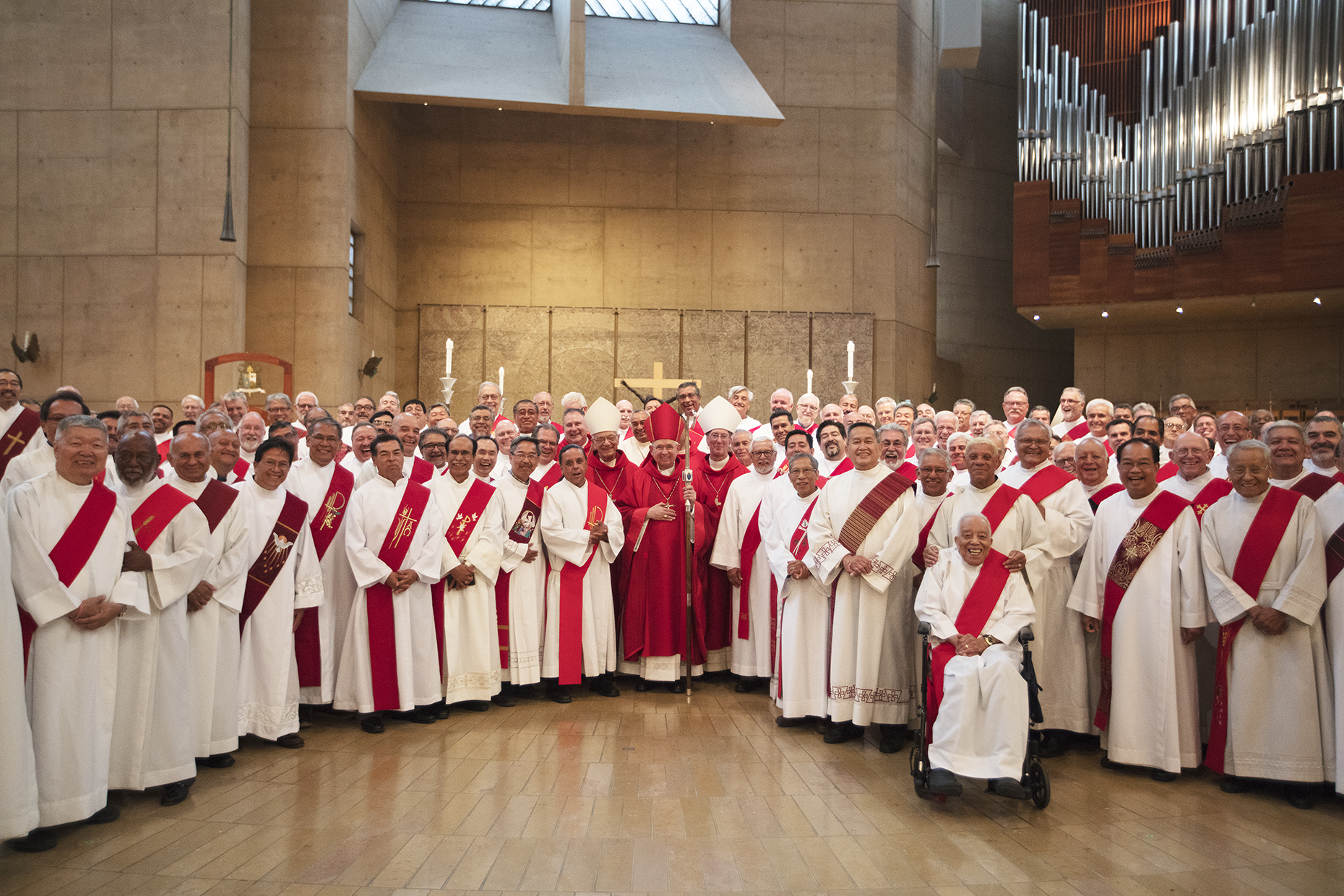History of the Diaconate
From the apostolic age the diaconate has had a clearly outstanding position among the various ministries and it has traditionally been held in great honor by the Church. Explicit testimony of this is given by the Apostle Paul both in his letter to the Philippians 1:1 (circa AD 60-62), in which he sends his greetings not only to the bishops, but also to the deacons; and in the first letter to Timothy 3:8-13 (circa AD 65), in which he illustrates the qualities and virtues that deacons must possess in order to be worthy of their ministry.
In the Teaching of the Twelve Apostles, commonly called the Didache (circa AD 70 – 90) we read, “…you must, then, elect for yourselves bishops and deacons who are a credit to the Lord, men who are gentle, generous, faithful, and well tried. For their ministry to you is identical with that of the prophets and teachers. You must not, therefore, despise them, for along with the prophets and teachers they enjoy a place of honor among you.”
St. Ignatius of Antioch, martyred circa AD106, declared that the office of the deacon is nothing other than “the ministry of Jesus Christ, who was with the Father before all ages and has been manifested in the final time.” He also made the following observation: “The deacons too, who are ministers of the mysteries of Jesus Christ, should please all in every way; for they are not servants of food and drink, but ministers of the Church of God.” “…Correspondingly show the deacons respect. They represent Jesus Christ, just as the bishop has the role of the Father, and the presbyters are like God’s council and an apostolic band. You cannot have a church without these.”
Finally, in the letter of St. Polycarp, Bishop of Smyrna (born AD 69/70; martyred AD 155/156), to the Philippians, we read, “…the deacons should be blameless before his righteousness, as servants of God and Christ and not of men; not slanderers, or double-tongued; not lovers of money; temperate in all matters; compassionate, careful, living according to the truth of the Lord, who became a servant of all.”
The first four centuries from Ignatius of Antioch to Gregory the Great have been called the Golden Age of the diaconate. During this period deacons flourished in numbers and in importance. They would oversee the pastoral care of the Church; serve as administrators of the church’s charities; assist the bishops and often succeed them in office. Deacons had a major role in the Church’s liturgies. At the same time, deacons gave outstanding witness of love for Christ and the brethren through works of charity, the celebration of sacred rites, and the fulfillment of their pastoral duties.
With the steady transformation of the presbyterate and the increasing importance of the presbyter as an individual apart from the corporate presbyterate, the diaconate begins to decline, though deacons continue for a long time as men of importance. By the latter part of the fourth century, for example, the deacons ceased to constitute the bishop’s personal staff. As the presbyters took the place of the bishop in the parish churches of the “diocese,” deacons instead became their assistants. Unfortunately, the relationship between deacons and presbyters was never clearly defined. This may have been one of the several reasons for the decline of the diaconate in the Middle Ages.
From the Middle Ages (AD 475 – 1475) to the days of World War II (1939 – 1945) the office of deacon was eclipsed in the Western Church. The human tragedy of World War II not only changed the map, but also the mind of Europe. In Germany theologians who had been imprisoned at Dachau advocated for the ordination of permanent deacons that might include married men. As a result of their efforts, the Community of the Diaconate was founded in Freiburg-Breisgau in 1951.
In 1959 Caritas International, a confederation of Catholic relief, development and social service organizations, requested that the diaconate be restored. From October 4 – 16, 1963 the subject was discussed during the deliberations of Vatican Council II. On September 29, 1964 the Second Vatican Council approved of the restoration of the diaconate for the Western Church. In Lumen Gentium (29) the Council briefly described the nature and functions of the diaconate and the needs of the Church that it hoped this ministry would meet.
During the next several years, Pope Paul VI implemented the Council’s decision in three important steps. The Apostolic Letter, Sacrum Diaconatus Ordinem (June 18, 1967), established canonical norms for the permanent diaconate. The new rites for the conferral of all three of the ordained ministries were authorized on June 17, 1968 in the Apostolic Constitution, Pontificalis Romani Recognitio. Finally, on August 15, 1972, Pope Paul VI published new norms for the diaconate in the Apostolic Letter, Ad Pascendum.
The Congregation for Catholic Education and the Congregation for the Clergy devoted particular consideration to the permanent Diaconate. Both Congregations, having consulted the Episcopate throughout the world and numerous experts, discussed the permanent Diaconate at their Plenary Assemblies in November 1995. As a result, the final texts of the Ratio Fundamentalis Institutionis Diaconorum Permanentium and the Directory for the Ministry and Life of Permanent Deacons were drafted by the two Congregations. Pope John Paul II approved the two documents on February 22, 1998, Feast of the Chair of Peter.


